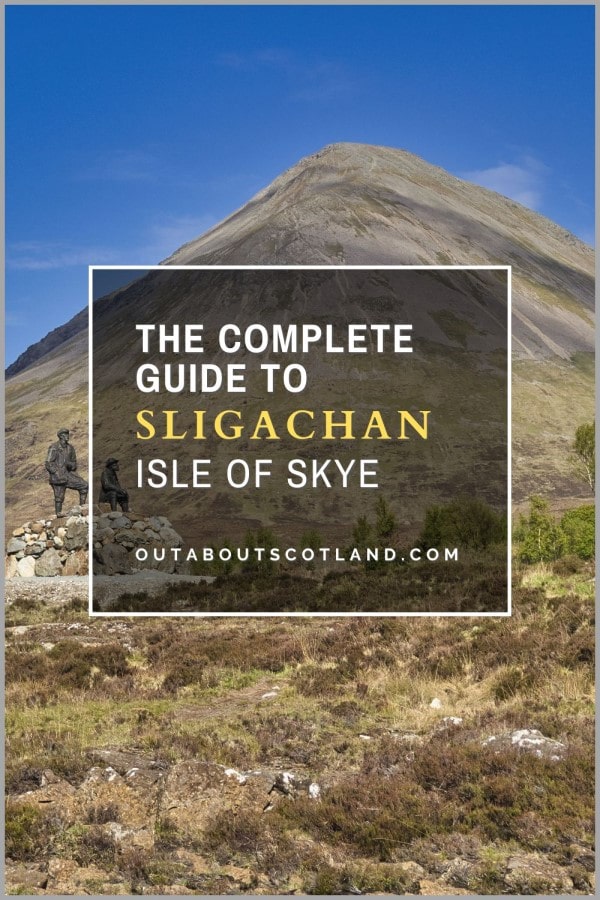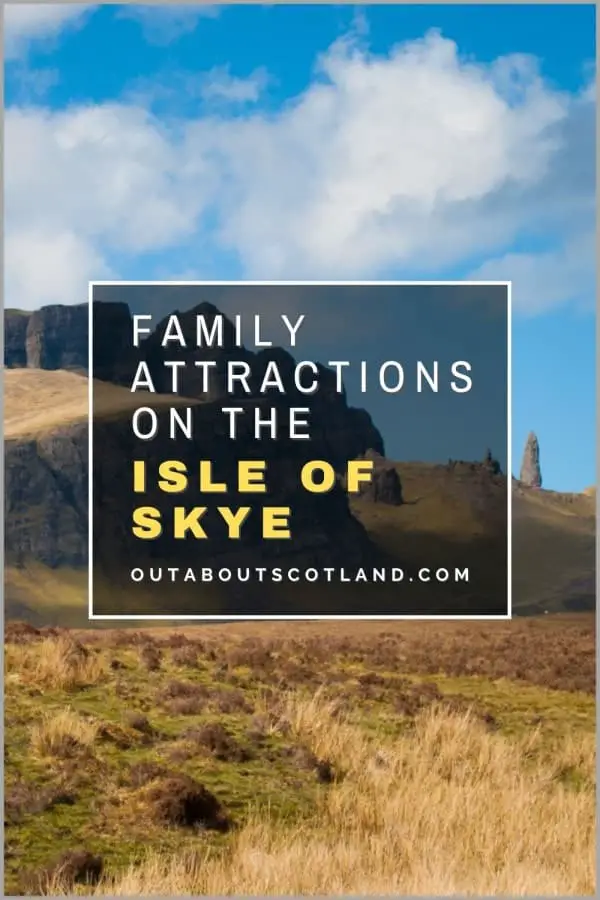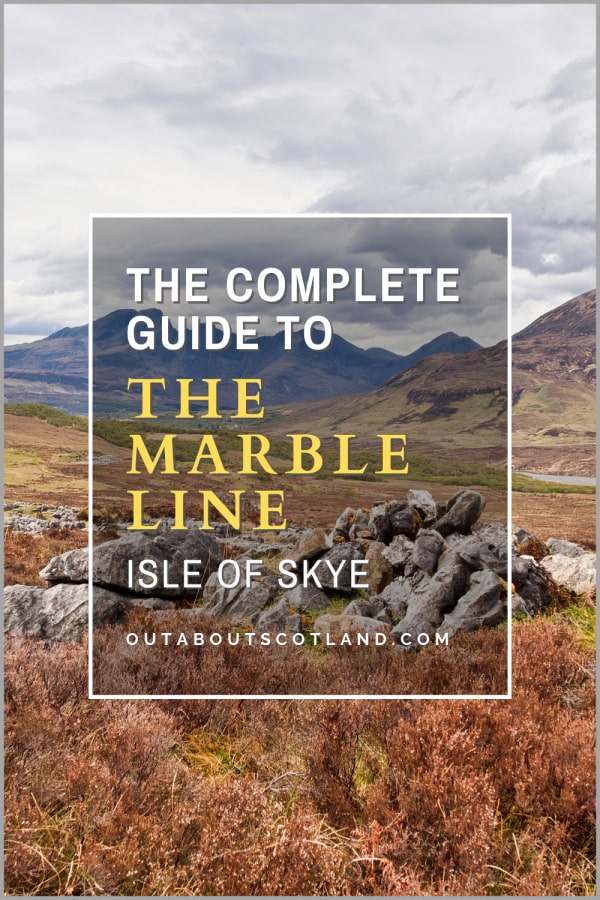The Fairy Glen is a unique landscape located on the west side of Trotternish on the Isle of Skye. This geological wonder comprises a number of conical hills that look man-made but are, in fact, remnants of an ancient landslip similar to the equally captivating Quiraing. Discover everything you need to know about visiting the Fairy Glen on the Isle of Skye in this complete guide, which includes tourist information and visiting advice.
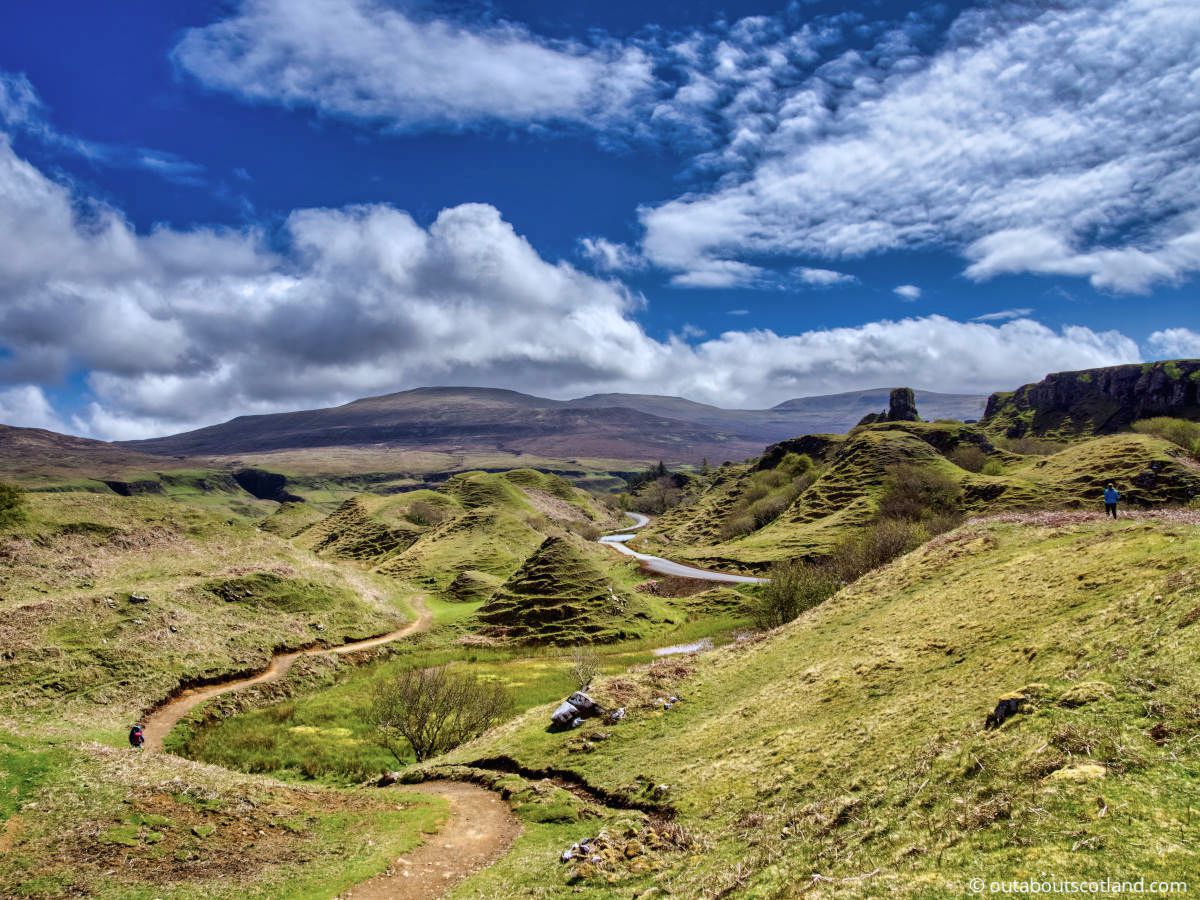
| Address: | Skye, Uig, IV51 9YG |
| Opening Hours: | 24/7 |
| Admission Price: | Free |
| Parking: | Paid on-site car park |
| Contact: | N/A |
| Facilities: | None |
| Photos: | Virtual Tour YouTube Video |
Overview
The Isle of Skye is one of the most popular tourist destinations in Scotland and easily rivals Edinburgh, Glasgow, and the Highlands as one of those ‘must-do’ places that everyone raves about. This enormous island on Scotland’s west coast features some of the most beautiful landscapes in the country (and dare I say it, the world) with jaw-dropping views at The Storr, the dramatic Cuillin mountains, and my personal favourite, The Quiraing on the Trotternish Peninsula.
This area on the north of the island is particularly scenic as it’s the location of the Trotternish Ridge, where vast cliff faces and rock pinnacles were created by a series of ancient landslips before being carved into unreal shapes by glaciers during the last ice age.
The entire region is stunning, so it’s no surprise it’s one of the most-visited regions of Skye, but there’s an equally scenic and much less-visited natural wonder located just a few miles to the west. Here, close to the small coastal village of Uig, lies the Fairy Glen, an enchanting landscape that looks so otherworldly you’d be forgiven for thinking it’s a Lord of the Rings film set.

The glen consists of a number of stepped conical earthworks and mounds situated in a low-lying valley and encircled by hills and cliffs that are strikingly similar to the much larger Quiraing. Between the mounds are ponds, copses of gnarled trees, and sheer-sided rock formations.
The entire glen is incredibly atmospheric, which is perhaps the reason there’s so much Scottish folklore associated with it. Legends say the Fairy Glen is a bridge between our world and the world of the sìthiche (the Scots Gaelic word for fairy), and having visited it I can understand why people imagine it’s a link to a magical realm, but the truth is sadly a wee bit more mundane.
The unusual mounds of earth are, in fact, remnants of ancient landslips that were formed just like the rock pinnacles of the Quiraing, but at the Fairy Glen they were further eroded by the weather, with different layers of sediment being eroded by different amounts—hence the ‘steps’.
It’s no surprise the Isle of Skye has a stronger association with fairies than anywhere else in Scotland, and many people visit the Fairy Glen to create ornate designs on the ground from loose rocks in an attempt to make contact with the fairies, while others go to simply enjoy the landscape.
Whether you believe in sìthiche or not, the Fairy Glen is a magical place that’s definitely worth visiting.
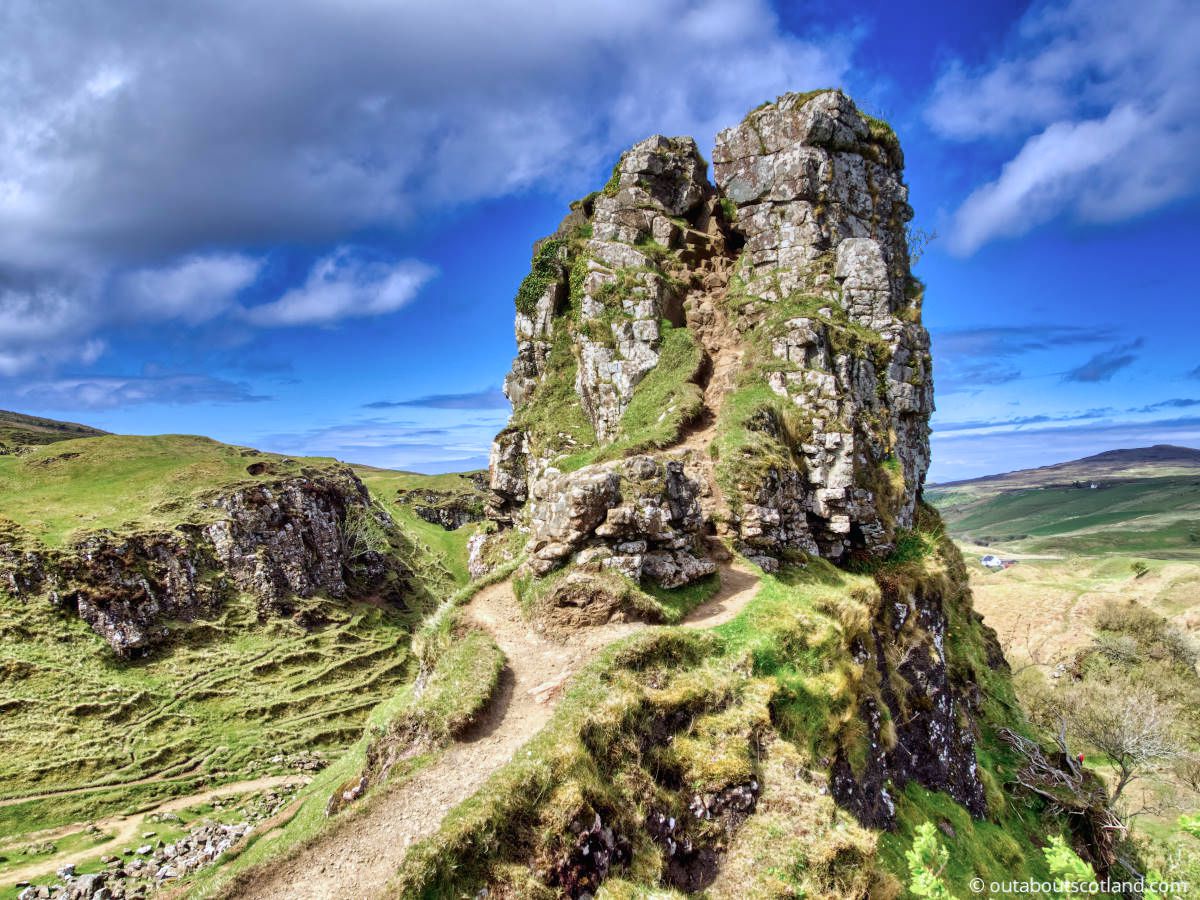
Book Tours in Scotland
The Highlights
1: The Fairy Glen is a completely bizarre landscape that’s quite unlike anything else in Scotland. The stepped, conical landforms are strangely beautiful and offer superb photo opportunities, much like the nearby Quiraing.
2: Castle Ewan – the pitchstone cap on top of a hill – is arguably the high point (no pun intended…) of the Fairy Glen. There are great views from the top, although it’s a bit of a squeeze to clamber up there.
3: Visiting the Fairy Glen is a great way to explore the Trotternish Peninsula. There are lots of outdoor attractions in the area so it’s possible to include other Skye highlights like the Trotternish Ridge and An Corran beach as well as the Fairy Glen in a single day.
Visiting Tips
1: The car park at the Fairy Glen is a reasonable size, but I suggest getting there early to guarantee a space during the peak summer tourist season.
2: There’s no set direction to walk through the Fairy Glen, but a good route is to take the path on the left-hand side of the road to the end of the glen (half a mile), cross over, and walk to the top of Castle Ewan. The area below is a great spot for a picnic, after which you can head downhill back to the road and rejoin the path that leads to the car park.
3: Be aware there are no facilities at the Fairy Glen and Uig is very limited, so if you need food it’s best to bring your own. There’s a hotel with a bar and restaurant, a bakery, and a grocer in Uig, but not much else.
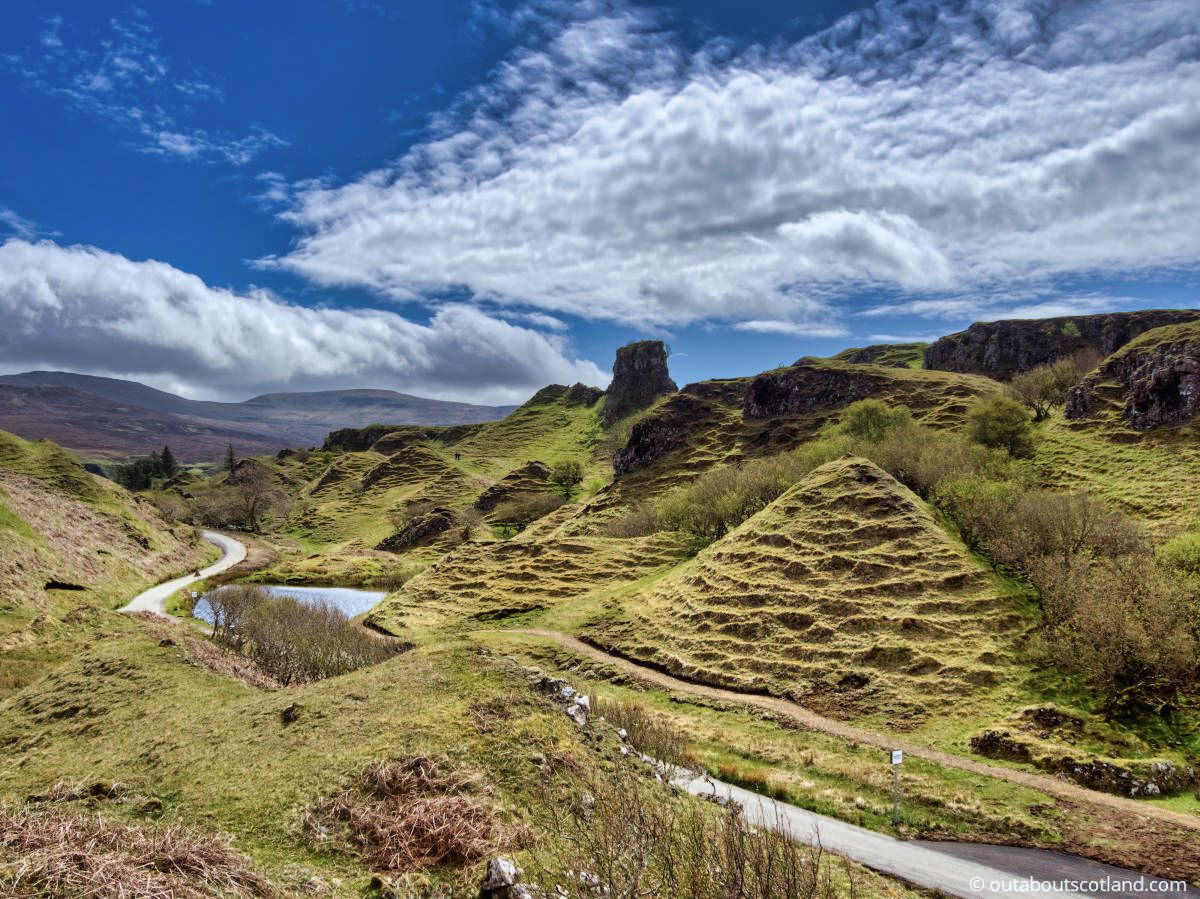
Protect Your Family From Scotland's Biting Midges
- Powerful, reliable protection for up to 8 hours
- Water- and sweat resistant
- Repels midges, mosquitoes, horse flies, sand flies, fleas and ticks
- Safe for use on adults, children over 30 months and pregnant women
- Non-sticky, moisturising with a pleasant fragrance
- Packaging may vary
Tourist Information
As remarkable as the Fairy Glen is, it’s one of Skye’s smaller attractions which is perhaps why the signs pointing to it are so few and far between. To get there from Portree, head north on the A87 towards Uig and take the right-hand turn just before the Uig Hotel.
From there it’s a five-minute drive down a winding single-track road where you’ll find a recently-constructed car park with a gravel track leading into the glen. There’s no set direction to take so you’re free to wander around it as you like, and it’s free to enter the site.
If you’ve been to the Quiraing you’ll know you can spend the best part of the day walking around it, but that’s not the case at this attraction. Instead, I’d plan an hour – perhaps two if you include photos and a picnic – but certainly no more.
The Fairy Glen has so many photo opportunities you won’t know where to begin, but a good route is to follow the dirt track from the car park where you can then take the occasional detour up the many conical earthworks.
The natural steps on the mounds mean it’s easy to climb up them, but I did notice the earth is quite soft so I wonder how long it will be before they’re worn away by the heavy feet of tourists and closed to the public completely.
When you’ve climbed a couple of mounds continue along the path to the end and cut across the road, then walk up to the plateau below Castle Ewan. This is the most popular spot in the glen, mainly because you can climb to the top of Castle Ewan and soak up the gorgeous views in all directions.
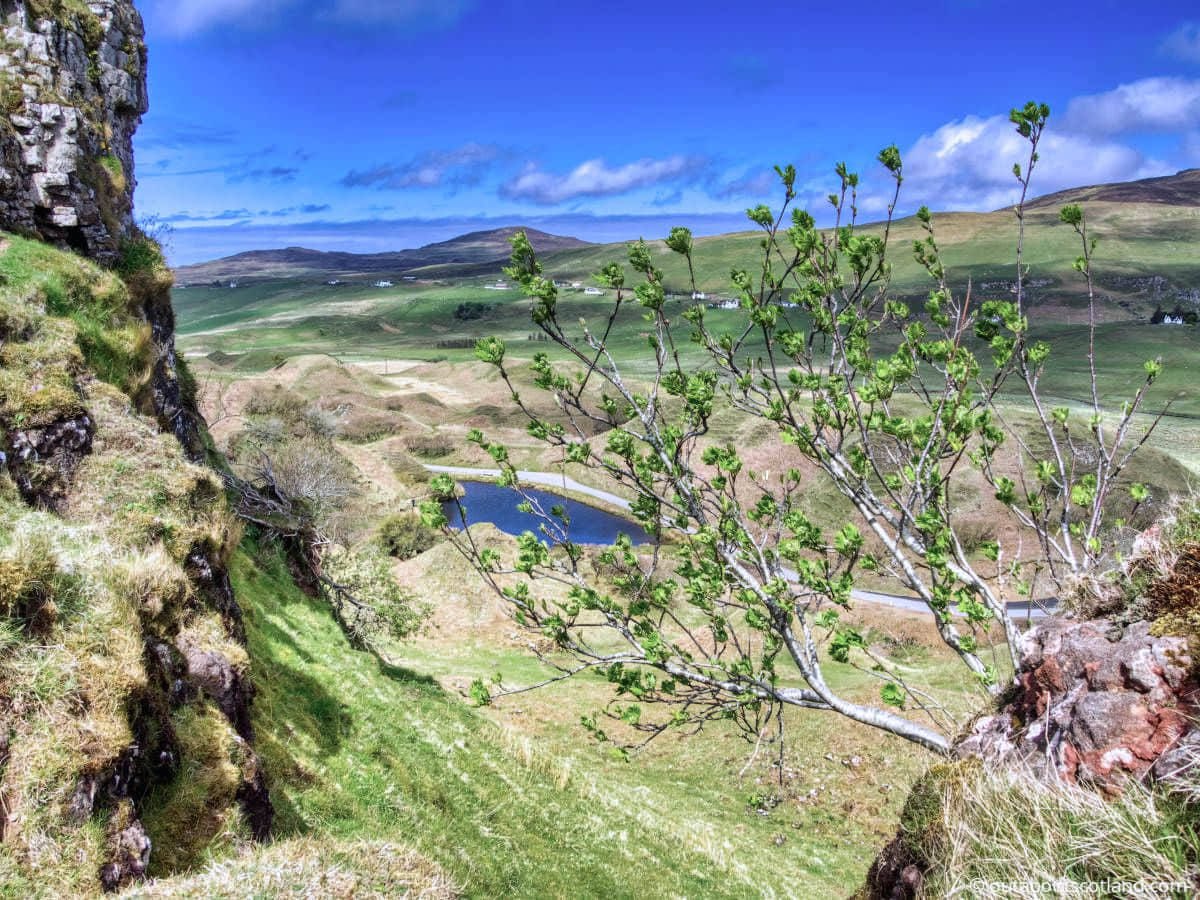
The ‘castle’ isn’t a man-made fortress at all and is instead a sheer-sided rock that has somehow survived the effects of erosion where the surrounding rocks have long since worn away.
If you’re visiting during peak tourism season (basically June to August), you’ll find there’s a procession of people waiting to squeeze their way up there for a quick selfie, so you might have to wait at the bottom and look at the stone designs that other visitors have made.
Despite the temptation to add your own embellishments, it’s a good idea to heed the warnings posted nearby asking visitors not to disturb any more rocks. These designs were entirely the work of tourists, and locals consider them to be vandalism.
The top of Castle Ewan is accessed through a narrow opening that is only accessible to one person at a time, but once you’re through, you’ll be able to take in the glen from its highest point, where you’ll notice how flat the surrounding landscape is.
You’ll also notice how small the glen is – maybe half a mile long – and to be honest there’s not much else to see from this point so I suggest following the dirt track that leads down to the pond at the bottom of Castle Ewan and taking a slow walk back to the car park.
From there, you have a number of options for other attractions to visit (see further down this page), with the pick of the bunch being The Quiraing, which is a 25-minute drive, but you’ll have an equally enjoyable time at The Storr, which is a 15-minute drive from Portree.
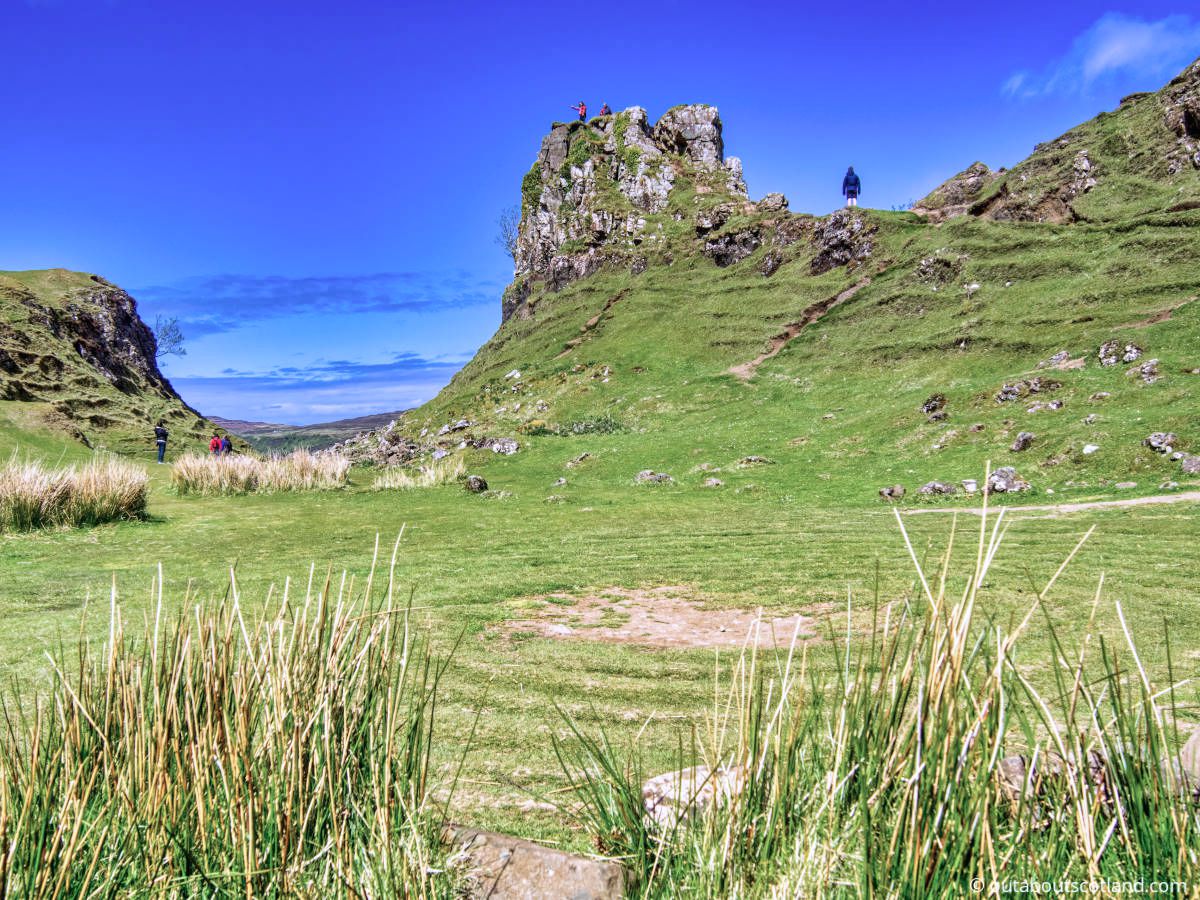
Things to Do
Hiking: The Fairy Glen is a unique and otherworldly landscape on Skye. The small, conical hills look almost like a miniature mountain range so taking a hike to explore it is an absolute must-do for tourists.
Photography: The Fairy Glen is a dream come true for photographers. Thanks to the peculiar landscape, every corner presents a unique shot – especially if you manage to get there during the magical golden hour.
Climb a Castle: While walking around the Fairy Glen, don’t forget to climb Castle Ewan, a natural rock formation that resembles a ruined castle. It’s a wee bit of a scramble to the top but the views are more than worth the effort.
Fairy Tale Exploration: The Fairy Glen is steeped in local myth and legend. Spend time searching for the fairy circles and spirals and gain an insight into why the glen is believed to be the gateway to the fairy realm. Visiting the site is a unique way to connect with Scottish folklore.
Woodland Walks: After visiting the Fairy Glen head back to Uig and join the Woodland Walk (postcode IV51 9YL). This short trail follows the shore and heads into ancient woodland where you might be lucky enough to spot a fairy hiding amongst the trees!
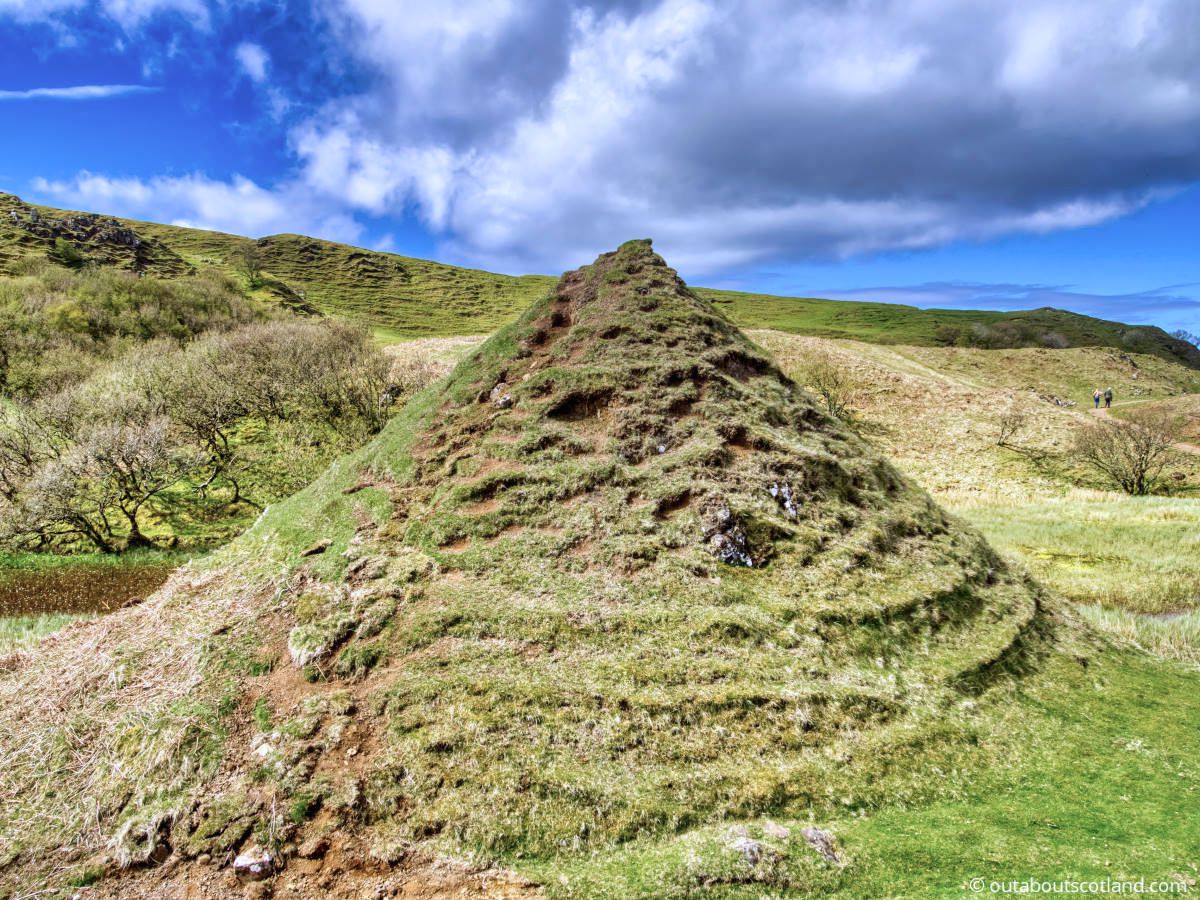
Book Tours in Scotland
Things to Do Nearby
The Quiraing. Portree IV51 9LB, 24-minute drive.
A scenic landscape located in the Trotternish region of Skye. The Quiraing was formed by a series of ancient landslips that left behind a number of unusual rock formations, including ‘The Needle’ and ‘The Prison’. A footpath takes visitors on a 2-mile journey through The Quiraing, with stunning views at every step of the way.
An Corran Beach. Portree 9JT. 32-minute drive.
An Corran Beach is also known as ‘Dinosaur Beach’ due to the dinosaur footprints embedded in some of the rocks. There is a small car park and a single-track road leading to the sand beach which overlooks Staffin Island.
Uig. Uig, IV51 9XX. 4-minute drive.
Uig is a small village located at the head of Uig Bay on the Western edge of Trottternish. As well as being the main port for ferry crossings to the Isle of Harris, Uig is a popular destination for coastal walks around the peninsula.
Portree. Portree IV51 9BT. 24-minute drive.
Portree is the largest town on the Isle of Skye. It features a number of attractions including wildlife cruises to the Isle of Raasay, a quaint harbour, and the popular Scorrybreac walking trail.
Sky Museum of Island Life. Kilmuir, Portree IV51 9UE. 20-minute drive.
This small museum is housed in restored traditional thatched cottages on the northern tip of the Trotternish Peninsula. The museum aims to show visitors how people have lived and worked on Skye with a number of informative exhibits and displays.
Frequently Asked Questions
How long is the walk at the Isle of Skye Fairy Glen?
The circular walk around the Fairy Glen on Skye is 1.25 miles. The route is level on a gravel path with optional short climbs up low grassy hills. The entire route will take one hour at a leisurely pace.
Why is it called the Fairy Glen?
The Fairy Glen has been given its name due to the strange natural landscape which has an otherworldly feel.
Historically, there are no ties to fairies and the Fairy Glen, though elsewhere on Skye there is a long mythology involving the ‘sìthiche’ and the island.
Is the Fairy Glen pram friendly?
The paths around the Fairy Glen from the tarmacked car park are mostly composed of compacted gravel and dirt on flat and level surfaces, which are suitable for wheelchairs and pushchairs.
The area on the opposite side of the road around Castle Ewan is predominantly short grass, which is suitable for prams, but not if it has been raining.
What visitor facilities are there at the Fairy Glen?
There are no visitor facilities at the Fairy Glen other than a car park.
Do you need to book in advance to visit the Fairy Glen?
You do not need to book in advance to visit the Fairy Glen on Skye.
How do I get to the Fairy Glen?
To get to Fairy Glen you can follow these steps:
1: Make your way to the Isle of Skye. You can do this by flying to Glasgow or Edinburgh and then taking a train or bus to the town of Kyle of Lochalsh.
2: From Kyle of Lochalsh you can either rent a car or take a bus to the village of Uig. If you are driving, follow the A87 road to Uig. The journey should take about an hour.
3: Once you arrive in Uig, follow the road signs to the Fairy Glen. The glen is located about 2 miles (3.2 km) from the village and there is a car park at the entrance to the site.
What is the geology of the Fairy Glen?
The Fairy Glen is characterised by a series of small, conical hills, or ‘mounds, that are surrounded by a shallow valley.
The mounds are formed from a type of rock called Torridonian sandstone, which is over 1 billion years old.
It is believed that wind erosion, which has removed the softer layers of rock and left the harder layers standing proud, is what gave the mounds their conical shape.
It is believed that glacial erosion during the last ice age formed the shallow valley that surrounds the mounds.
Protect Your Family From Scotland's Biting Midges
- Powerful, reliable protection for up to 8 hours
- Water- and sweat resistant
- Repels midges, mosquitoes, horse flies, sand flies, fleas and ticks
- Safe for use on adults, children over 30 months and pregnant women
- Non-sticky, moisturising with a pleasant fragrance
- Packaging may vary



